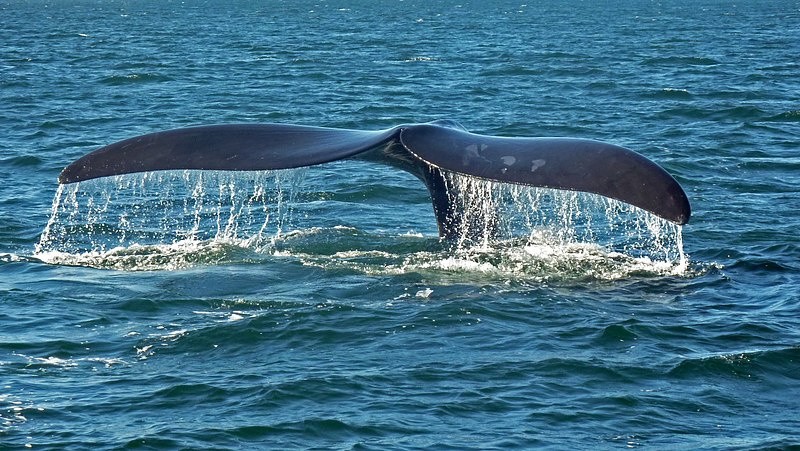A large group of southern fin whales was spotted feeding in Antarctica, raising hopes for their recovery. Scientists claim the world's second-largest mammal population has gradually increased since the 1970s whaling moratorium, although sightings in Antarctic feeding regions remain uncommon.

Scientists have praised a "thrilling" Antarctic display involving up to 150 southern fin whales as a sign of optimism for the world's second-largest mammal. A ray of hope.
Ocean Giants
The ocean giants are only second in length to blue whales, and their slim bodies allow them to glide through the water at incredible speeds.
They could not avoid industrial whaling and were butchered to near-extinction throughout the twentieth century when hunters methodically decimated whale populations worldwide.
"They were reduced to 1 or 2 percent of their initial population size," said Helena Herr, lead author of the study, published in the journal Scientific Reports. "We're talking about a few thousand animals throughout the southern hemisphere."
On a Steady Rise
While experts claim that southern fin whale populations have been steadily rebounding since a whaling moratorium was imposed in 1976, there have been few sightings of these strange creatures in big groups at their ancient feeding sites.
Researchers and videographers could catch footage of 150 southern fin whales in Antarctica, which Herr hailed as "one of nature's greatest occurrences."
Drone footage captured by BBC wildlife cameras shows fin whales swooping and lunging through the water, expelling tremendous blasts of air as they surface while birds whirl above them.
"The water surrounding us was boiling because the creatures were constantly coming up," Herr said on Thursday. "Just standing there and watching it was exhilarating."
Documented Sightings

Researchers documented 100 groups of fin whales in two voyages in 2018 and 2019, ranging from tiny groups of a few individuals to eight large congregations of up to 150 animals.
Previously, reported feeding groups had no more than a dozen whales. The authors estimate that there might be over 8,000 fin whales in the Antarctic region based on data from their surveys.
When left alone, fin whales may live to be approximately 70 or 80 years old and produce just one calf at a time; therefore, Herr believes population recovery will be sluggish.
A Hopeful Sign
She said an increase in the number of southern fin whales was a promising indicator that conservation efforts were working. Still, she also mentioned other concerns, such as being hit by boats.
The International Union for Conservation of Nature presently classifies fin whales as "vulnerable," with a global population of 100,000, the majority of which live in the northern hemisphere.
More whales might also be a good indication of the overall health of the ocean, as well as efforts to combat climate change.
Whales graze on iron-rich krill, but they also defecate in the surface waters, returning nutrients to the ocean and promoting the growth of small phytoplankton, which forms the basis of the marine food web. Like plants on land, phytoplankton uses the sun's rays to convert carbon dioxide into energy and oxygen.
They were "ecosystem engineers," according to Herr, who discovered a huge group of the whales by surprise in 2013 while conducting a study on Antarctic minke whales.
Future Expeditions
Herr is now planning more expeditions to examine the long-standing riddle of these ocean monsters - where they breed. "We don't know where they travel," Herr said, adding that far more was known about northern hemisphere fin whales.
The animals may reach roughly 27m (88 feet) heights, but Herr claims they currently average 22m, thanks to whaling that targeted the largest specimens. Over the twentieth century, approximately 700,000 individual fin whales were slaughtered for the oil in their body fat.
Related Article : Is the Population of Endangered Fin Whales Finally Recovering?
For more animal related news, don't forget to follow Nature World News!
© 2025 NatureWorldNews.com All rights reserved. Do not reproduce without permission.





